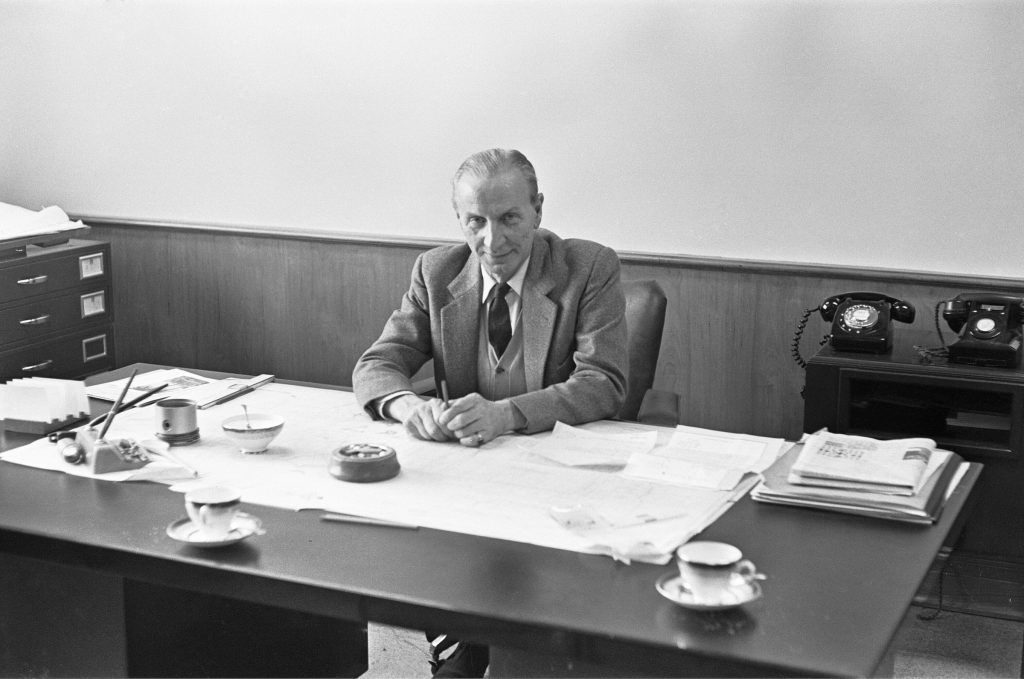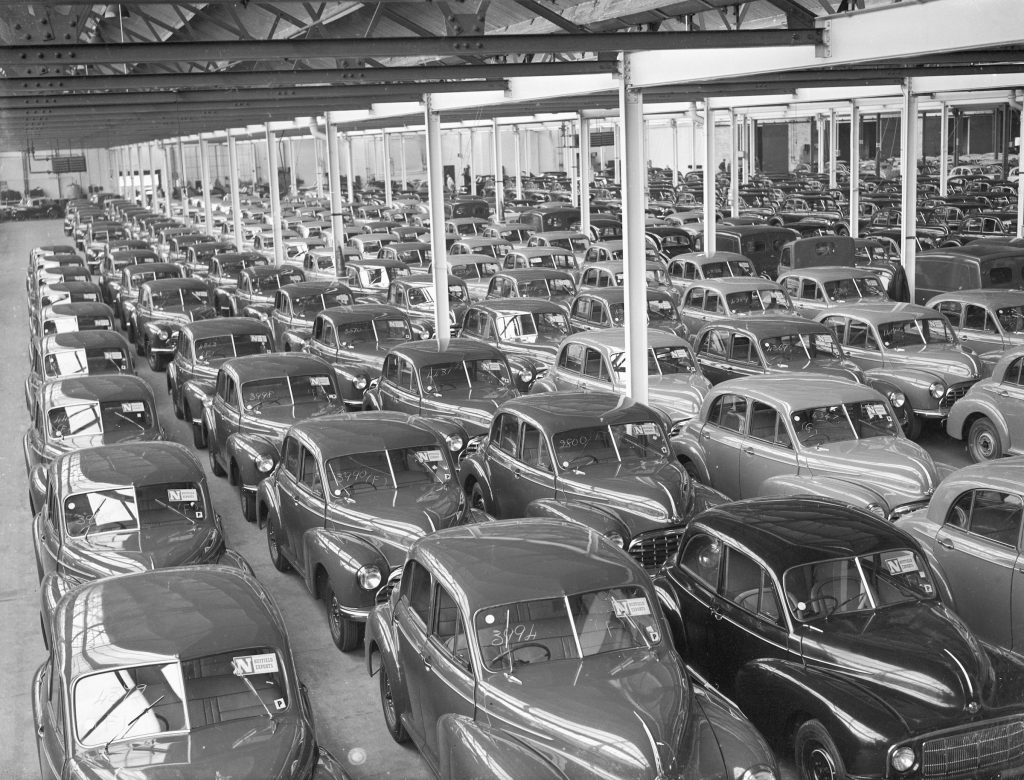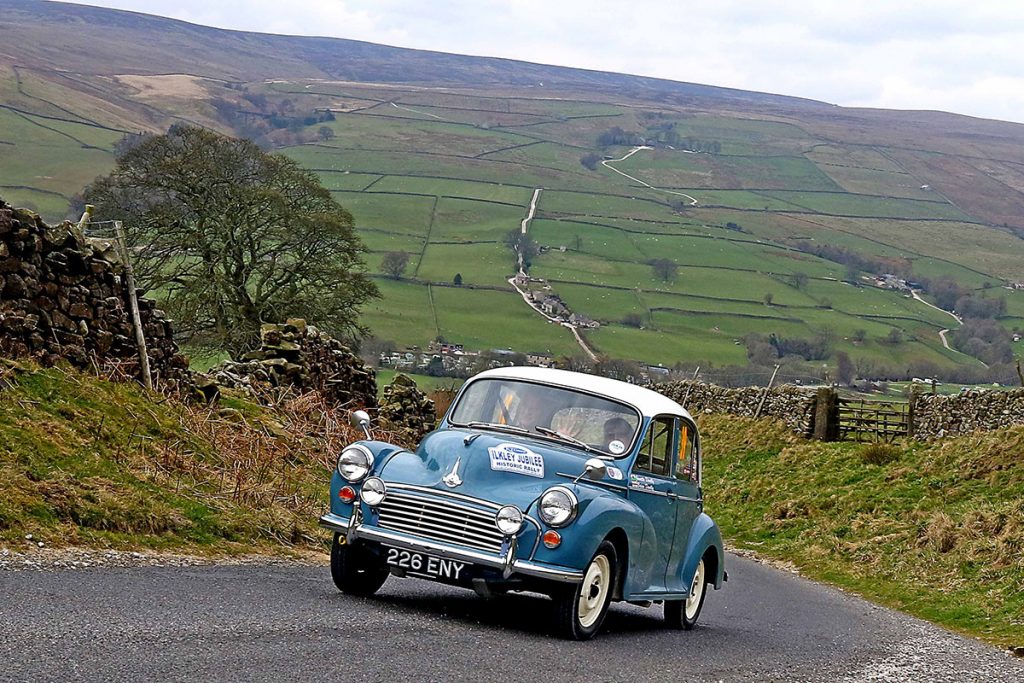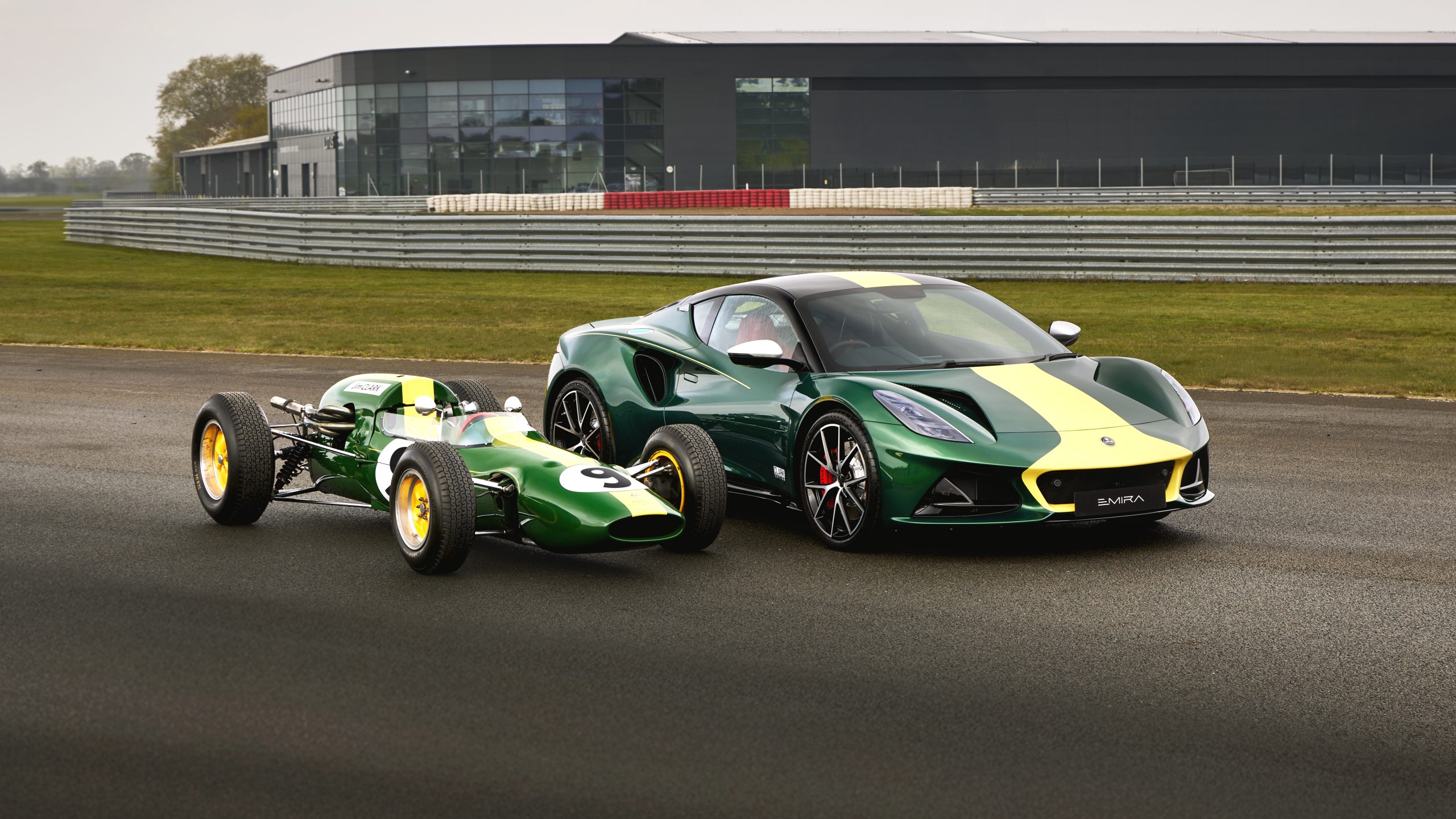Before he was famous for the Mini, Alec Issigonis led the design team for this, the Morris Minor, a British economy saloon with a monocoque bodyshell, which proved so popular it stayed in production from 1948 to 1972, through three main series of cars and 1.6 million models.
At its launch at the Earls Court Motor Show in October 1948, the Morris stand was thronged with the public and The Motor magazine said it “stole the show”, and that was against stiff opposition including Jaguar’s XK120 sports car.

When The Motor’s road-test staff got their hands on two test models, they drove them over high mileages concluding that “there has been nothing like it offered in the economy class previously… Morris Minor is an astonishing car, in that one criticises freely yet would not dream of condemning”.
That was a 919cc, side-valve engine version mustering just 27bhp at 4400rpm, but then it weighed just 775kg. Motor praised the performance of this £358 10s 7d car (including tax) and in testing it achieved an average top speed of 62.3mph, 0-50mph in 24.2sec and an average of 40.5mpg.
Looking back, Autocar magazine called the Morris Minor “a primary way Britain got back on the road after the Second World War”.

These distinctive saloons with their round roof lines, were a feature of my childhood. I often rode in my parents’ friends’ examples in various states of (dis)repair with shopping and dogs on the Vynide seat coverings and I can still recall the pobble pobble of the exhaust and the distinctive ching as the unsynchronised first gear was engaged. Looking back they were the antithesis of glamour and seemed more like bits of mobile scenery than automobiles.
These were the archetypal District Nurse’s or vicar’s wife’s car, much-loved daily transport for many families. And while they were capable of extraordinary feats, for the most part they were revered as lightweight, cheap and economical cars, which were, given the right maintenance, pretty reliable.
And it wasn’t just a two and four-door saloons, either. There were the wood-framed Traveller shooting brakes, convertibles, tourers, vans, pickups and numerous specials.
Philip Young, rally impresario even borrowed the Archbishop of Canterbury’s Morris Minor and entered the 1980 Himalayan Rally, and Nick Mann’s beautifully presented twin-turbo V8 special has long been the apple of my eye.
Yet it could all have been so different. Issigonis wanted a flat-four series of water-cooled engines displacing 800cc and 1100cc, but they were deep sixed after they struggled in testing and the front bench seat and column gear change followed them overboard.

William Morris hated the early ‘Mosquito’ prototype calling it a ‘poached egg’. Part of the resolution of that issue was a car was cut in half lengthways and on Issigonis’s instructions a four-inch strip was inserted, which could still be seen as the flat bit on the bonnet of the production models. It was mainly built at Cowley, but huge demand saw additional production lines built and eventually the Minor was built at Abingdon, Adderley Park, and assembled all round the world as completely knocked-down kits.
To drive? You sit upright and high off the ground, staring down that crocodile bonnet with enough head room to accommodate a stove-pipe hat. Depending on the vintage of the car you’ll have to learn a new set of skills such as double de-clutching, operating a foot-actuated dip switch and Semaphore indicators. Wear stout shoes as water can spout up from where the pedals disappear through the floor, but not too wide as the throttle is tiny. Also wear warm clothes as heaters were notoriously rubbish and carry a chamois leather as demisting was even worse and the windscreen wipers are vestigial at best.
And don’t be expecting to win any drag races, either. Any Minor is slow even those with replacement 948cc A-series engines. And the brakes aren’t the last word in retardation, either, requiring a firm push and a postcard in warning. Provided it’s using the correct-width tyres, the steering is light and direct and while progress is leisurely, that doesn’t seem to matter too much. This is journey through time as much as it is a quick trip.
Just recall, when the Minor was first introduced Buttons and Bows by Dinah Shore and Her Happy Valley Boys was at the top of the hit parade, by 1971 when the last car rolled off the line it was Hot Love by Marc Bolan’s T.Rex. The two artists wouldn’t recognise each other, unless they were driving Morris Minors of course.
As for the Minor’s place in popular culture, just be aware that the Internet Movie Cars Database has dozens of pages of Morris Minors in movies.

Today, these paragons of village life are much sought after, with prices to match. Thanks to the vast numbers exported there are clubs all round the world (in the UK go to the Morris Minor Owners’ Club) and the parts situation is pretty good. The last saloon to be built was restored by the MMOC a few years ago and is part of its collection.
The van version lived on for a few months, with the last version built in February 1972, but Minor sales had been falling for years, victim of not just the rival Mini and the Morris 1100 ranges, but also Ford’s Escort which was launched in 1968 and Volkswagen’s Beetle which was cheaper and arguably more reliable. Some thought there was more development potential left in the Morris Minor and they are probably right, but British Leyland’s management had pinned its hopes on the Marina and Allegro (and look where that got them!).
The legacy of this little car I would argue is that a low price, cute looks and practicality go a long way in the market, but you need to keep pouring in development cash to keep the vehicle up to the minute on safety and emissions.
It’s an interesting thought that if BL had put some more money in and kept the old Morry going, it might have proved an ideal styling base for a cheap, utilitarian battery electric car. And if that seems fanciful, just look at the Fiat 500, a similarly based and priced battery car based on the style of Dante Giacosa’s Cinquecento original.
Bet that doesn’t go pobble pobble…
Read more
Once traded for a Rolls-Royce, the last Morris Minor made is now in a museum
Rebecca Treston, the classic car podcaster helping others navigate the scene
Buying Guide: Morris Minor (1948-1971)










Mogs are probably the best cars in galaxy
Great article about an iconic British car (but I’m the somewhat biased owner of an Almond Green 1968 Traveller!) One comment: the 1949 Getty photo of the dealer inventory does not show Morris Minor low-lights. The cars in that photo appear to be the Minor’s larger sibling, the Morris Oxford.
The photo of cars awaiting despatch is fascinating because apart from the black Morris Minor at bottom right, most of the other cars are actually Morris Oxfords. They had higher headlights, bench front seats and larger radiator grilles, but are largely forgotten today, unlike the Minor which lives on in a rosy nostalgic glow. The amazing thing about the Minor is that it is still viable as a daily drive. Steering, suspension and brakes are all adequate as long as they are properly maintained and mine still returns around 40 mpg as well as receiving smiles and waves wherever it goes.
Met an old-timer at Rover whose first job on arriving was to calculate the profit on the recently ended production of the Mog…
He totted up all the development, tooling and production costs and proved to management that they’d lost money on the project despite the numbers produced.
They had priced it wrongly.
Recall vividly from my childhood what you say about the brakes too as the Grandparents arrived “at pace” onto the driveway in their hearing-aid-beige version: the canary cage reaching 45 degs as Grandpa tried desperately not to plant it straight through the garage door…
In the early 90s I drove my ex wifes grandparents Minor from Bolton to the Charles Ware Morris Minor centre in Bristol. It was a snow berry white 1969 model. I travelled home on National Express and travelled back to Bristol the week after to collect it. It was a journey I’ll never forget, performed faultlessly and every fill up resulted in lots of attention and conversations with complete strangers.
Interesting. Never knew that the designer planned flat 4 engines.
Yes but what about the 1928 to 1934 Morris Minors?
Sadly no mention of its predecessor the pre-war Morris Minor. That really attracts attention and never fails to put a smile of anyone’s face who we pass!
The Morris Minor also provided floorpan and suspension architecture for the Wolseley 1500/Riley 1.5 and even the Morris Marina!
My first car in 1969, a 1956 split screen in Smoke Grey. Used to drive it around a building site next to home after the builders had finished for the day learning to change gear as I had yet to pass my test. Bought for £5 from a nurse it had no hydraulic brakes so my Dad and I drove it home on the handbrake. First motor mechanic skill to learn was therefore replacing the brakes, brake lines, master cylinder and bleeding the brakes. Built like a tank. A pal had one he used to carry his surf board around on a roof rack. I sold him mine in the end for £20 for spares for his. He ended up using mine and his for parts. As this is an article about British cars ditch the Americanisms will you…….deep sixed!!
My mum had a 1962 Russet green convertible. We lived near Longbridge and got caught in a snowstorm. Heading south we almost made it to the top of Lickey Hill (Lord Austin’s grave in the churchyard was in sight) but being rear-wheel drive we couldn’t make the last 100 yards. She had to reverse down the hill for half a mile passing the long line of cars stuck in the snow. The car is probably long gone but the registration lives on – it was probably worth more than the car as the number was 999.
Thanks, Chris – when I read the article I had no idea what “deep-sixed” meant, having never heard it in my 60 years, although I obviously worked out the general meaning from the context. Having Googled it after reading your comment, it appears that even our American friends who use it aren’t entirely sure of its origin or why it means what it means…
Dear Chris, Thanks for the comment and a very happy new year. Deep six might be used in America, but I’ve always understood it to be a naval term used to indicated depth of well over 36 feet (six fathoms) and therefore safe passage in restricted depth. Indeed I’ve heard it used on a square rigger sailing out of Southampton in my youth and I think it’s a great term. So, with your permission I’ll keep using it. All best, Andrew
I currently own a 1958 minor in old English white with the 948 OHC engine. The basic model; no heater or fan, no seatbelts and no windscreen washers. Old style drum brakes so you have to leave plenty of distance from the car in front. Old style damper arm suspension. I wouldn’t want to part with it and I use more or less as a daily driver. Certainly attracts attention everywhere I go. Lovely classic car for anyone who is starting out on an older car and very easy to find parts. Keeps up well with today’s traffic and sits at a comfortable 65 on the motorway
Absolutely loved my maroon Morris 1000 it was my first car when I was 18 in 1994 never have I had so much fun driving a car. I can still smell the red vinyl now haha